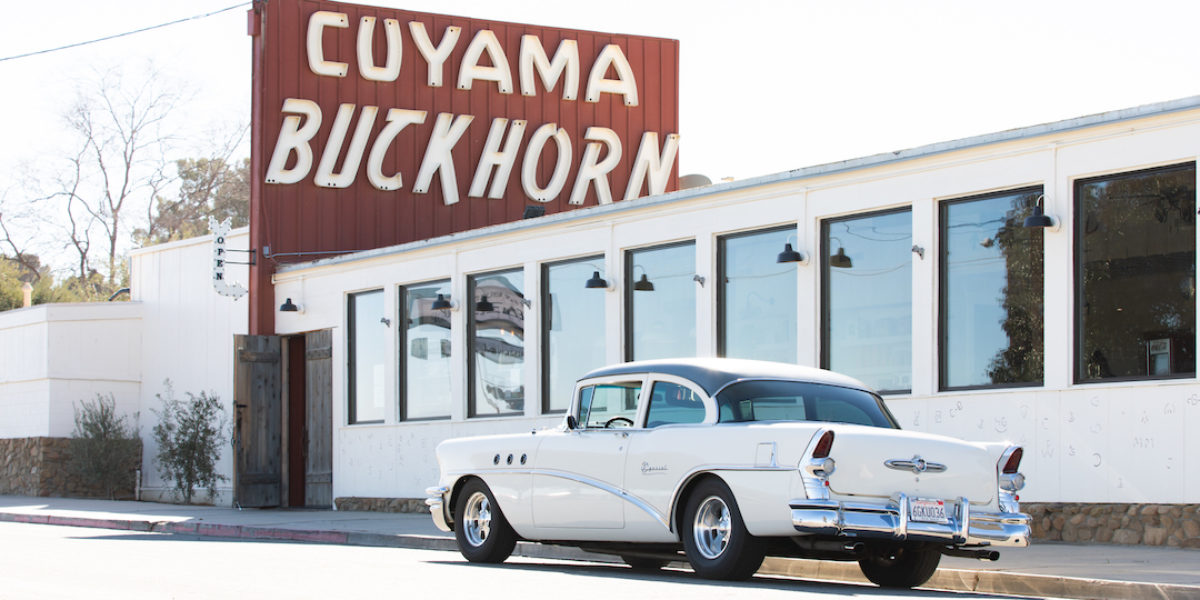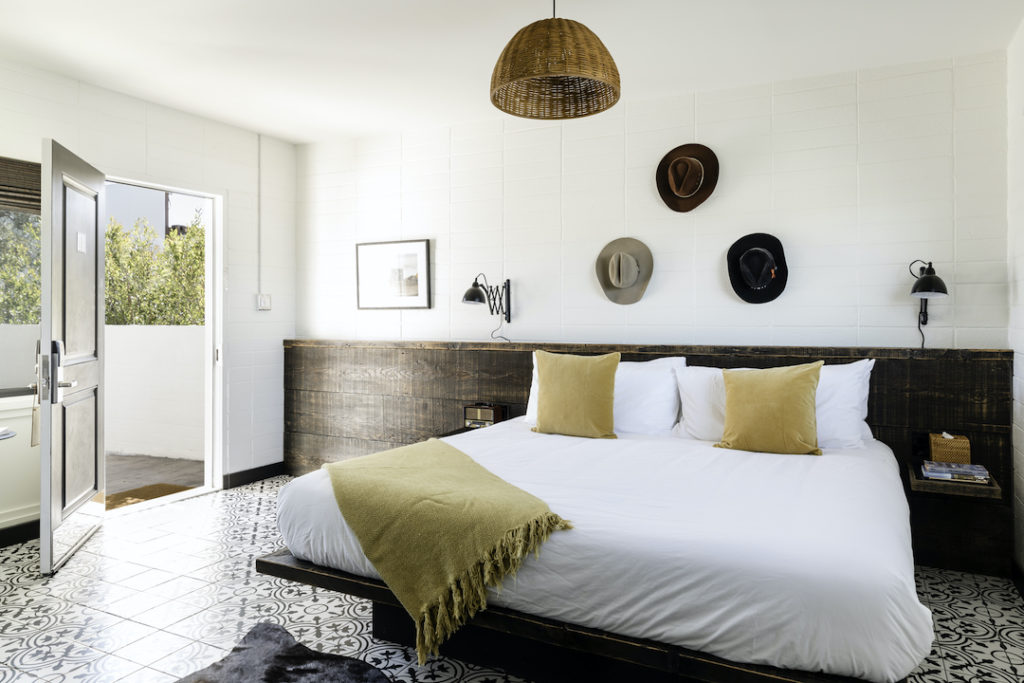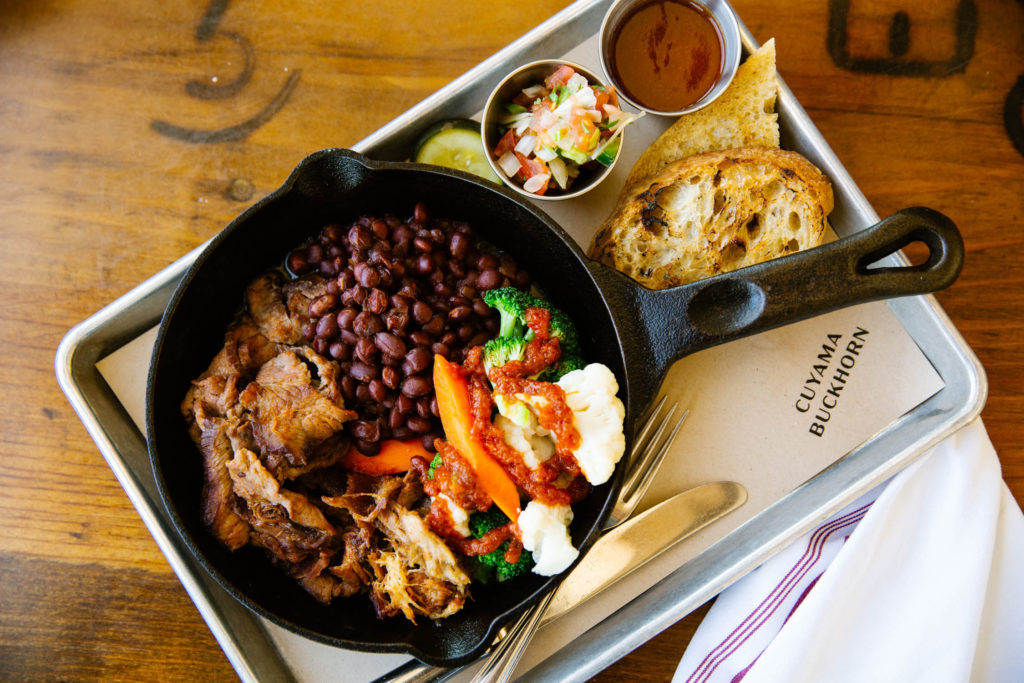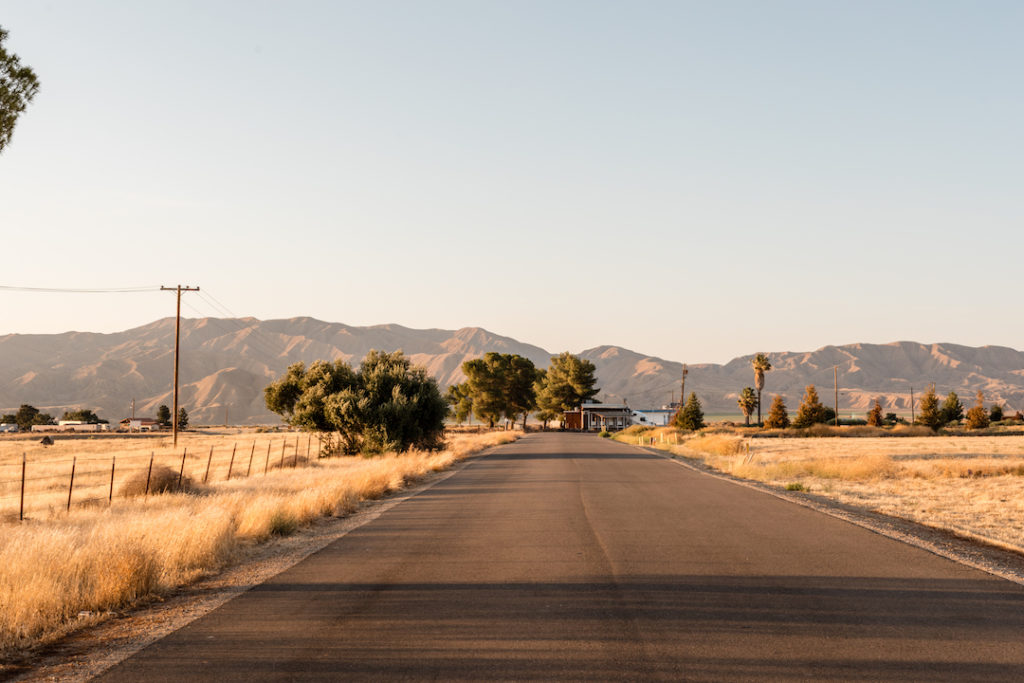
I Stayed in a Classic Motor Hotel and It Was Peak Nostalgia
Cuyama Buckhorn calls on a bygone era of California’s backroads and byways.

Photo Courtesy of Cuyama Buckhorn
To truly understand the West, you have to get on the road. And in my opinion, there’s no better way to do so than visiting some of California’s classic motor inns. No, I’m not talking about the slapdash urban motel revamps smack dab in the middle of city centers that have taken over the hive mind of interior design. I’m talking about true motor lodges located in remote destinations designed to accommodate dyed-in-the-wool road warriors.
The concept of a motel was actually born here in California, just like me, so perhaps it’s a little bit of local pride that makes me hold these motels so dear. (The first of record, Milestone Mo-Tel, opened in San Luis Obispo in 1925.) It could also be an affinity for car culture—the advent of the automobile and the freedom that the open road brings is what catapulted motor courts to their popularity at the turn of the century. Or perhaps it’s the fact that I’m a sucker for a portmanteau; the world “motel” is a mash-up of “motor” and “hotel,” after all. Either way, mom-and-pop motels beckon a bygone era of backroads and byways that light my West Coast wanderlust right up. And I found a great one in Cuyama Buckhorn, located in the high desert of the Central Valley.

Courtesy of Cuyama Buckhorn
Built in 1952 when Cuyama was a booming oil town, the property has recently been restored to capture the nostalgia of the West, but with modern upgrades like Brooklinen bedding, Bluetooth radios, Further bath products, and walk-in showers. It’s a far cry from the first bare-bones motels, which were more glorified rest stops along desolate highways in post-war America. But Cuyama Buckhorn still has that rural connection that gives it a feeling of connection to the past.
Cuyama itself is a dusty agriculture town that boasts a whopping population of 562, but this is just the type of Western retreat for a traveler who’s into quiet and wide open spaces. When I first pulled in, I was admittedly shocked by how the motel was quite literally the town. In the immediate vicinity, there’s a convenience store where you’ll find every flavor of Takis imaginable, a gas station, a community center, and a tiny (but very cute!) vintage shop. But that’s it. Which is all by way of saying: This is a stop for true road trippers who prefer stargazing over bar hopping, and would pick a round of cornhole over 18 holes any day of the week. In other words, me.

Courtesy of Cuyama Buckhorn
Here in Cuyama, the enterprising, can-do attitude of the Old West still exists. At its heart, it’s an ag town, and one that’s facing a series of struggles, many of which have to do with water rights. Even as a visitor, you can’t help but get wrapped up in this high desert community. There are incredible winemakers and eco-activists at Condor’s Hope who are using age-old dry farming techniques to work in harmony with the increasingly dry but incredibly beautiful natural habitat, holding community harvests with fellow permaculture activists that are standing up to the looming presence of big ag in the area. There are community builders at Cuyama Beverage Co., a social enterprise whose delightfully dry sparkling mead proceeds go to creating rural resilience through their Blue Sky Center. This is the type of travel I live for—the kind that feels integrated and non-extractive, and most importantly fun.

Stephanie Helguera
On weekends, you’ll hear the thunderous groans of a herd of Harley-Davidsons pulling into Cuyama Buckhorn for a bite at their delicious modern-diner, or a $4 beer at the taxidermy-adorned dive bar. Their restaurant, The Buckhorn, serves legit Santa Maria-style tri tip alongside some of the best heirloom baked beans I’ve ever had—and that’s saying a lot, given I grew up traveling back-and-forth to San Luis Obispo to visit family my entire childhood. There’s a charming general store featuring locally-produced items to bring back home, too. It truly is the perfect pit stop for motorcyclists, cyclists, and road trippers looking to take a load off before continuing on the journey West on Route 166, where they’ll eventually meet the iconic Highway 1 in Santa Maria.

Courtesy of Cuyama Buckhorn
The journey to Cuyama is just as rewarding as the destination itself. Coming from Los Angeles, we opted to take Highway 33 instead of the god-forsaken route of Highway 5. (If you know, you know.) The 33 led us through Casitas Springs, which Johnny Cash called home, winding around Ojai and eventually spilling out into switchbacks through Los Padres National Forest. It was a fascinating drive watching the landscape change from an arid, red bush manzanita-lined two-lane road to a dense forest of pine, eventually dropping back into the high desert once more.
If it wasn’t 115 degrees in the middle of the year’s most punishing heat wave during my visit, the surrounding areas would have been the perfect spot to stop off for a hike or to overnight, especially in the spring, when the wildflowers that blanket the Carrizo Plain are in bloom.
Even in the summertime, the epic technicolored sunsets are only to be outdone by the spectacular stargazing. In fact, Mt. Pinos is considered a Dark Sky area and is ideal for camping and amateur astronomy. They call it the Valley of Enchantment for a reason, and I’ll definitely be coming back for more.
Read the Current Issue Here!
Get one year of Sunset—and all kinds of bonuses—for just $24.95. Subscribe now!
